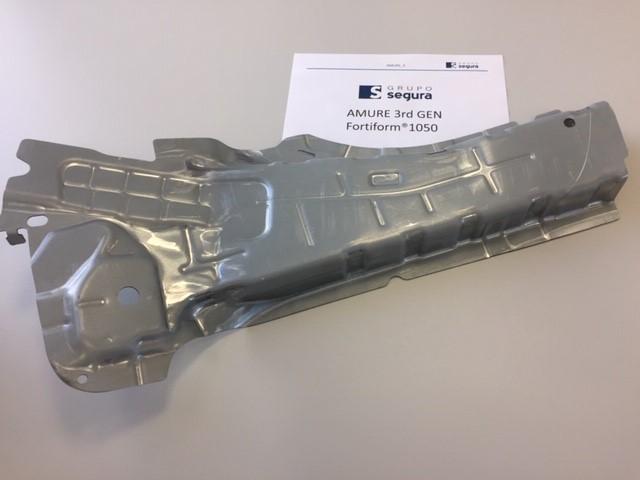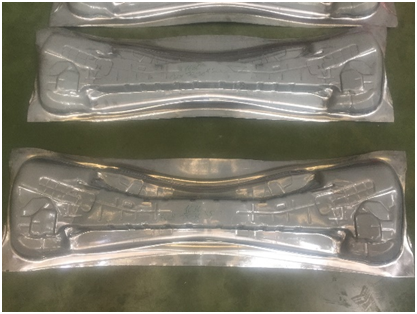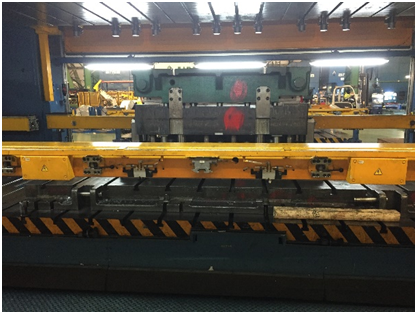Products
Product pages available in
EN - DE - FR - ES
Sustainability
News, events and stories
ArcelorMittal and Grupo Segura develop cold stamping solution for Fortiform®
Grupo Segura, a leader in the design, development, and manufacture of metallic components for automotive applications, recently completed an R&D project which will help it meet demand from OEMs for cold stamped solutions. Together with ArcelorMittal, Grupo Segura studied how the latest ultra high strength steels (UHSS) for cold forming can be used to lightweight and strengthen an existing part which is already in serial production.
The project aims to meet the automotive industry’s objectives of making vehicles lighter and safer. New materials can help OEMs to achieve these goals. But understanding the characteristics of the latest UHSS steels is key for ensuring their adoption by the automotive industry.
Cold forming trial of Fortiform®1050
The steel selected was Fortiform®1050 which allows lightweight structural elements to be created using cold forming methods such as stamping. These third generation UHSS offer additional weight reduction thanks to their higher mechanical properties and excellent formability.
One of the first steps in the R&D project was to characterize the steel to determine its mechanical properties (for example, elasticity modulus, yield strength, uniform elongation, and tensile strength). The data allowed Grupo Segura to define the stress-strain curve and other properties of Fortiform®1050. Analysis showed that the geometry of a part made from Fortiform® must be adapted to control springback.
Virtual simulations and stamping trials successful
Using AutoForm, a leading software tool for virtual product manufacturing, the viability of forming Fortiform® steels into lightweight and high strength parts was demonstrated. Grupo Segura also completed a stamping assessment of Fortiform®1050+EG with AutoForm and ArcelorMittal. The assessment was based on a floor reinforcement stamping-die which was originally engineered for DP600+GI (1.50 mm). Minor geometry changes were applied to facilitate formabilityand avoid wrinkles. Stiffeners were also added to compensate for springback deviations.
ArcelorMittal shipped Fortiform®1050+EG prototype blanks to Grupo Segura so that real-life prototypes could be created and tested. The results demonstrate that Fortiform®1050+EG offers good formability. No cracks or local splits originated from the dedicated stiffeners which were implemented to compensate for springback. There was also good correlation between the numerical simulations and physical trials (done on parts stamped with gridded blanks which allow strains induced by forming to be measured). The results showed that the stamping die can be applied to Fortiform®1050+EG to achieve a lighter and stronger part. The prototype stamping die is now available from Grupo Segura.
Fortiform®980+GI blanks have been already supplied and will be assessed at the end-customer’s site using the knowledge gained from this initial investigation of Fortiform®1050.
-

The study found there was a good correlation between numerical simulations and physical trials [Copyright Grupo Segura and ArcelorMittal]
-

ArcelorMittal shipped Fortiform® 1050+EG prototype blanks to Grupo Segura for stamping trials [Copyright Grupo Segura]
-







